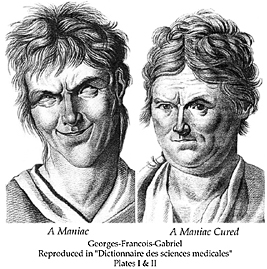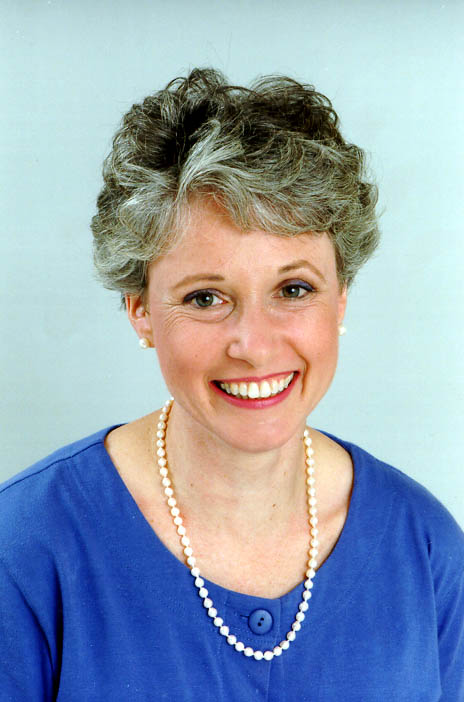
On Physiognomy

"Your face, my Thane, is as a book where men may read strange matters," said Lady Macbeth. Presumably she had a flair for physiognomy, because no-one else had noticed Macbeth's murderous intentions until she pointed them out. Which raises the question, is face reading a science or an art? Aristotle had a go at it, in his proto-scientific way, using human-animal feature similarities to infer character, but the intuitive Lady Macbeth approach dominated for the following two millennia. Then Barthelemy Cocles' Physiognomonia (1533) appeared, mapping features to temperament in a comprehensive tabulation, reaching conclusions such as "people with snub nose are vain, untruthful, unstable, unfaithful and seducers". Unfortunately Cocles' experimental method consisted of looking at people he knew and deciding what he thought of them. This naturally inspired plenty of other people (particularly snub-nosed ones) to do the same thing, and produce their own competing face/character correlations.
Johann Kaspar Lavater, an eighteenth century physiognomist, argued for both systematic observation and for intuition. He thought that, "As the most virtuous can best determine on virtue, and the just on justice; so can the most handsome countenances on the goodness, beauty, and noble traits of the human countenance, and consequently on its defects and ignoble properties." So a physiognomist should be good-looking, an idea that goes back to the Judgement of Paris myth.
By the nineteenth century, the medical possibilities of physiognomy helped put it on a more objective footing. The relationships between mental illnesses and face shape were documented, and repeated patterns applied in diagnosis. The results were hit-and-miss, fueling the search for subtlies, rather than skepticism. Popular belief was that criminal tendencies could be read from the face -- they certainly could in Dickens -- and thus prevailed a high confidence in physiognomy.
Itís reasonable to wonder whether, at the end of the twentieth century, the speculations of Aristotle, Montaigne, and others, can be put on firmer ground. To see just how much progress has been made, I visited several web-based centres for physiognomy. There is interesting and enticing material at http://www.panditji.com/face/index.html, and http://nirc.com/visage.html, but the most exciting physiognomist on the web is definitely Rose Rosetree, http://www.rose-rosetree.com/, who "will enable you to find more in people than youíve ever seen before."
Rose does not simply do face readings. She is also able to read auras, at the same time opening your third eye and cutting your cord of attachment. She can also move energy for your group; as the organizers of the Baltimore Whole Life Expo explained to Rose: "You were the only local speaker we found who could hold and move energy for a big group." But her forte is definitely face reading. "Since Rosetree began to teach Face Reading Secrets, she has read thousands of faces. At the end of each reading, she asks for feedback about accuracy. About 99% of the time the response is positive."
Rose can provide you with a reading or readings. Alternatively, if youíre cheap, she will sell you a book that teaches you how to read your own face, thereby avoiding the embarrassment of being read by your spouse first, like Macbeth. Obviously, once you know how, you can read other peopleís faces too. Roseís website doesnít give much away about technique, but it did yield this gem, which Iím already working on with my plastic surgeon: "Take the example of the nose trait I call the nose bonus. Some people have an extra chunk of nose that hangs down below the nose tip, between the nostrils. In THE POWER OF FACE READING, I give examples of people who have had this face data. The list includes:
Martin Luther King, Jr. * Albert Schweitzer * Anwar Sadat * Leo Esaki * Henri Bergson * Jacinto Benavente Martinez * Odysseus Elytis * Yuan T. Lee * Har Gobind Khorana * Camillo Golgi * Ivan Pavolv * Tiger Woods"
People without the nose bonus may be starting from behind, but we can all aspire to our facesí potential. One of the things Rose can tell you that you donít already know is how to love your face. "Your reading will help you appreciate how perfect your face is, as a reflection of the inner you." This is a bit of a turn-around for physiognomy. In the forward to Roseís book, Dr. Narayan Singh Khalsa comments that he once read that "A concave nose is one step away from animality and bestiality." Tempting as it is to nod sagely at this point, Dr Khalsa wants us to understand that "paranoid" analyses like this are things of the past. Roseís methods ensure that there is no possibility that either your face or your inner you is defective. As she breezily affirms, "Face Reading Secrets is based on this premise: God don't make no junk."
The ability to read faces can be enjoyed for its own sake, rather like music or rock climbing, but it also gives you and yours some concrete advantages. "Rose can show your sales staff how to use her system of FaceReading Secrets ® to spot physical traits that reveal how clients make decisions, spend money, handle other people's rules, set priorities and more." Rose stresses that she doesnít want you to abuse your power. Rather than enforcing an ethics code, she looks you over before accepting your cash. That works both ways. Here is Rose, and I think youíll agree she looks exactly like a professional physiognomist.

Finally, itís reassuring to know that Rose is concerned with your welfare. You may have been wondering, if you learn Face Reading, what if you canít stop. As she puts it: "Could Face Reading turn me into some kind of a weirdo, where I drive myself and other people crazy?" I have to admit, I had started wondering that very thing. But itís ok. Rose explains: "Look, when you learn to read faces you're not heading for The Twilight Zone. You won't obsessively go for the deep stuff every time you see a couple of ears or a chin. This is a skill. You can turn it off or on at will. Think of Face Reading knowledge like a TV set. When you choose to know more about people, zap!, you can turn it on. When you're more interested in something else, say sex, your brain can be otherwise occupied. Automatically the part of you that does Face Reading will turn off." Just to be sure, Iím going to check this tonight.
Vicky Bruce and Andy Young give an interesting review of the history of physiognomy in their In the Eye of the Beholder OUP, 1998, pp140-146, on which I've lightly drawn.